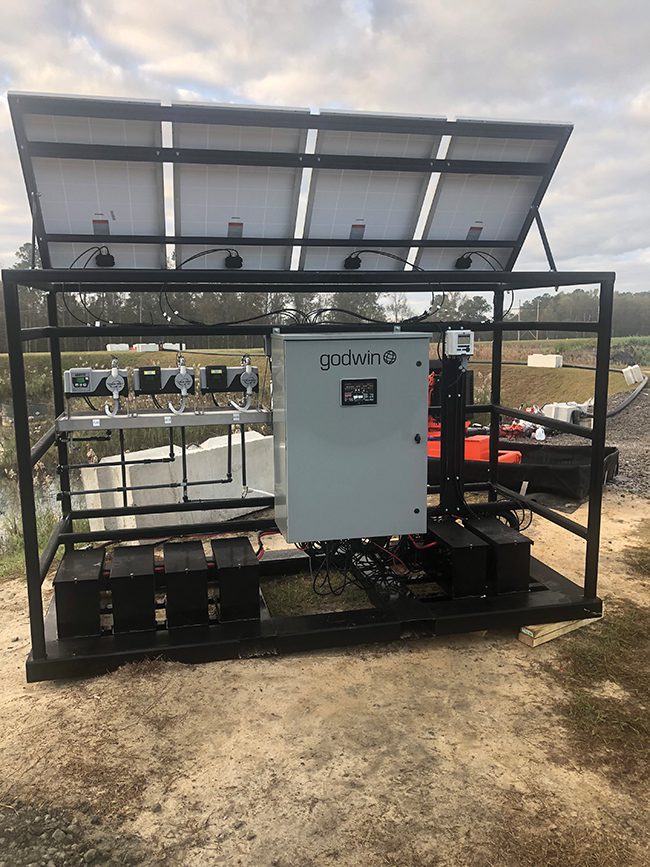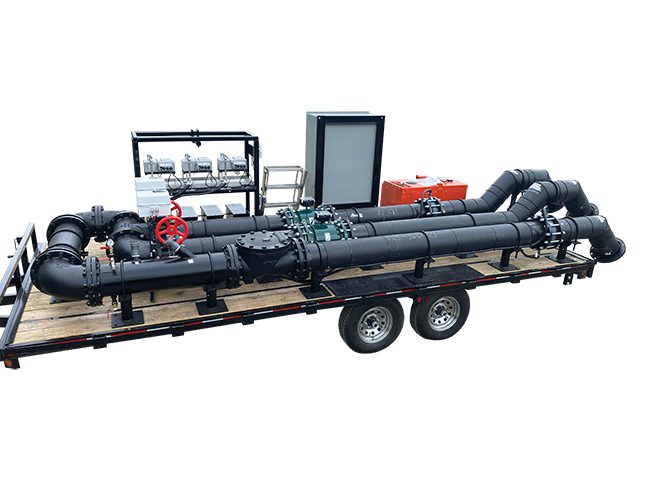Water Quality Management and Control—Managing the Second-Largest Waste Material in the U.S.
Coal ash, or coal combustion residuals (CCRs), is the second-largest waste material in the U.S., just behind household garbage. The safe and sustainable management of coal ash poses one of the most complex challenges facing energy producers.
Many power generation facilities are built near a water source so that a ready supply of cooling water is available. Strict Environmental Protection Agency (EPA) rules aim to ensure safe coal ash disposal to protect local environments and prevent damage to properties or waterways. National EPA rules aim to address the potential risks from coal ash disposal such as blowing of contaminants into the air as dust, failure of coal ash surface impoundments, or the leaking of contaminants into groundwater. The latter is crucially important as 115 million people in the U.S. rely on groundwater for their drinking water, according to the U.S. Geological Survey.
The EPA regulations also require facilities to keep consistent records and to report how coal ash is managed, maintained, and disposed of. Facilities must also make their coal ash management or disposal methods available on a publicly accessible website. Energy producers work hard to abide by these regulations and are acutely aware of the importance of safe coal ash management. Along with other stakeholders—policy developers, local communities, and purchasers and consumers of energy—energy producers want nothing more than a safe, sustainable facility that holds no threat to their local community.
A solution to this complex issue requires holistic thinking and an expert partner with in-depth experience in coal ash remediation. Xylem works with the biggest power utilities in the U.S. and over the last 20 years has completed more than 500 successful coal ash projects. This extensive experience combined with an expansive product portfolio has enabled Xylem to develop a unique solution for the safe, sustainable remediation/treatment of coal ash contact water.
Smart, Integrated Solutions
Dave Donahue, Xylem’s national sales representative for coal ash, said, “About six years ago we were approached by a client who needed to lower the level of their coal ash pond to ensure that it wouldn’t overflow into neighboring waterways. This challenge led us to combine our extensive pumping, wastewater treatment, and data monitoring capabilities to create a unique solution to solve the client’s challenge.”
And so, Xylem’s water quality management and control system was developed. The solution can be customized to suit the individual requirements of a particular application. Combinations can include wastewater pumps and piping, monitoring sensors, and pre-treatment. Smart monitoring and control features can also be integrated to maximize sustainability and minimize the manpower required. This integrated solution has since been successfully used in more than two dozen power plants across the U.S., helping facility managers to ensure compliance with EPA regulations in a cost- and resource-efficient manner, while maintaining the safety of the surrounding area.
Donahue continued, “Working in close collaboration with our pumping and monitoring teams, we developed a process to monitor the total suspended solids (TSS) and pH levels of the customer’s coal ash pond. This ensured that the treated wastewater was within the specified EPA limits and that it was safe for the system to continue to pump water into the neighboring waterways.”
Pre-treatment chemicals or flocculant can also be incorporated into the solution to ensure the wastewater is within the specified EPA treatment limits and is safe for the system to continue pumping into the local river, lake, or stream. “If the TSS or pH of the wastewater is not within permitted limits, an alarm is triggered and the system automatically shuts down,” said Donahue.
 |
|
1. Xylem’s system can be powered by solar panels and batteries in remote locations. Courtesy: Xylem |
The Xylem team has since developed a mobile version of its original design—a unique feature of the solution. Built on a flat deck trailer, Xylem’s water quality management and control system can be easily moved to a different site location as needed. Even in remote locations, these treatment units can still address the customer’s challenges with the addition of a solar skid designed to power the equipment (Figure 1).
Donahue explained, “Listening to our customers and designing custom solutions that address their unique challenges are key to how we operate. When a customer approached us looking for a coal ash treatment solution for an area that was prone to flooding, we determined a mobile unit would be best in that instance. Our original, stationary design can measure 50 to 100 feet in length. For a mobile unit, we adapted and tailored this structure to create an extremely compact solution that fits neatly onto an 8.5-foot by 20-foot trailer. Despite its small size, this system is capable of flowrates up to 1,000 gallons per minute. Comprising two totes of pre-treatment chemicals, chemical metering pumps, and a generator, it’s a completely self-contained system. The system features two discharge points—one for clean water and one for reject water.”
Working across all aspects of the water and wastewater spectrum gives Xylem the capacity to tailor the water quality management and control system as required by individual customers. From dewatering pumps to pump controllers to smart monitoring and control (M&C) devices to data gathering, each system can be as simple or as sophisticated as necessary.
Minimum Manpower, High Level of Compliance, Continuous Data Recording
One of the many benefits of Xylem’s water quality management and control system is that it requires minimum manpower to operate. Remote M&C devices provide the ability to remotely view the system in operation from any location, while alarms alert operators if there is an issue, meaning that resources once required to monitor pumps or treatment systems can now be diverted elsewhere.
The system also ensures a high level of compliance with EPA regulations. In 2015, the EPA finalized national regulations to provide a comprehensive set of requirements for the safe disposal of coal ash from coal-fired power plants. These requirements have many owners today asking how to best monitor and comply, especially with the critical last step—the final testing phase. Accurate online, optical sensor–based TSS monitoring provides a real-time measurement of effluent TSS that can be used as an operation and management parameter for complying with regulatory requirements.
Continuous TSS measurement can also provide plant owners the potential for significant operational efficiencies and cost reductions. System automation reduces manpower and laboratory costs by eliminating extra samples and laboratory tests, as well as starting and stopping the transport pumps and valves in order to properly manage the pre-treatment process.
“Facilities that require wastewater samples to be collected once or maybe twice daily and reviewed in a lab can now use smart sensors that are continuously monitoring the water in real time,” continued Donahue.
“Manually grabbing samples at different intervals during the day can mean that a spike in TSS levels or pH is missed and may only be uncovered following damage downstream to aquatic life, for example. It also eliminates the need for batch testing of discharge water where some customers were required to pump water into a tank while samples were tested in the lab to ensure it was safe to discharge,” he said.
“Xylem has worked closely with a number of coal-fired power plants to develop optical-based sensors to measure real-time TSS levels to verify that discharge water is continually meeting regulatory requirements. Scheduled laboratory TSS testing continues to be performed to meet permit requirements (and periodically to verify the calibration of the online instrument), but real-time, probe-based TSS monitoring eliminates the need for frequent extra sampling and laboratory testing. Through rapid and consistent in-the-field TSS monitoring, these facilities are reducing compliance risks and costs. They are also consistently preventing costly project delays resulting from lengthy lab analysis procedures.”
Data recording is another benefit. Real-time TSS monitoring can provide ongoing backup documentation, an “optical fingerprint” providing a real-time effluent discharge record that can substantiate compliance reporting and defend against potential legal action. It can also be used to demonstrate a plant’s good faith in exceeding its permit requirements—demonstrating the plant is being a good steward of the environment.
 |
|
2. The mobile version of Xylem’s water quality management and control system is built on a flat deck trailer that can easily be moved to different locations as needed. Courtesy: Xylem |
Xylem’s water quality management and control system components include a 7-kW diesel-fueled generator, piping, chemical injection metering pumps, inline static mixers, automated butterfly valves, Smith-Blair saddles, YSI IQ SensorNet probes (different probes can be used depending on the need, such as to monitor for turbidity, TSS, pH, or other parameters), MJK electromagnetic flowmeters, and Godwin smart M&C control equipment (Figure 2).
“We offer customers a ‘one-stop-shop’ solution. We work closely with customers to develop a custom solution comprising whatever system elements they require depending on their unique challenge. The adaptability of our solution means we can tweak it for use across industries and customize it to suit individual applications. For customers seeking water monitoring, testing, or pre-treatment before disposal, we have the depth and breadth of expertise, equipment, and technology to provide an integrated, complete solution,” concluded Donahue.
—This article was contributed to POWER by Xylem.